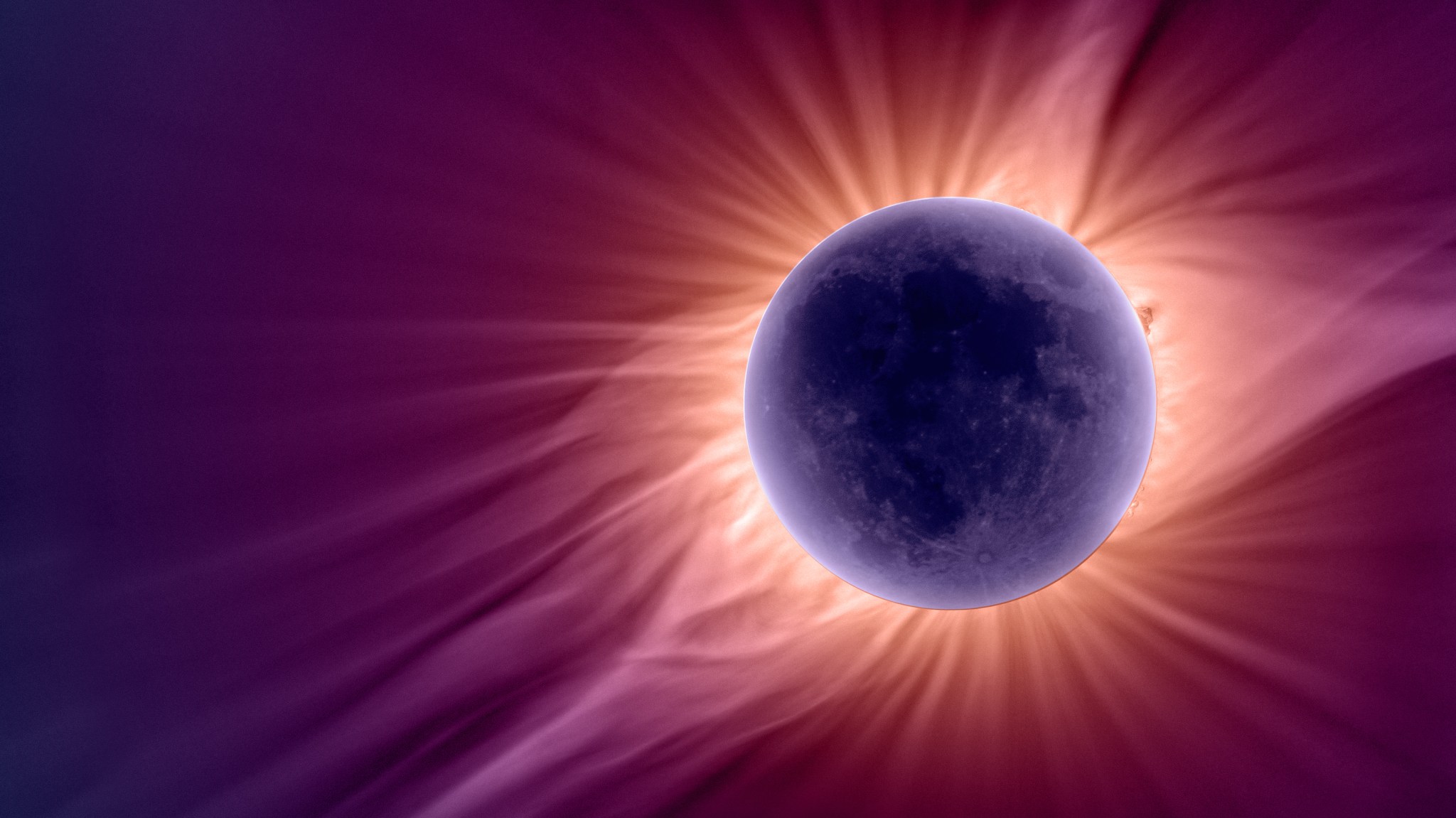Eclipses aren’t just beautiful – they’re great for science.
In addition to inspiring artists and musicians, eclipses have driven numerous scientific discoveries. For over a century, solar eclipses helped scientists decipher the Sun’s structure and explosive events, find evidence for the theory of general relativity, and discover a new element, among other things.
Today, NASA scientists still study eclipses to make new discoveries about the Sun, Earth, and our space environment. Total solar eclipses are particularly important because they allow scientists to see a part of the Sun’s atmosphere – known as the corona – that’s too faint to see except when the bright light of the Sun is blocked.
Scientists use instruments called coronagraphs to block the Sun’s light in a manner similar to a total eclipse, but these instruments still struggle to reveal the region of the corona closest to the Sun, where many important processes occur.
Why We Observe Solar Eclipses
Studying the innermost part of the corona – visible only during total solar eclipses – is key to answering fundamental questions about how heat and energy are transferred from the Sun out into the solar wind, the constant stream of particles that the Sun spews into the solar system. The solar wind can impact humans and technology at Earth, so understanding how it becomes accelerated at the Sun can help predict its impacts at home.
Total solar eclipses provide an opportunity to study Earth’s atmosphere under uncommon conditions. In contrast to the global change in light that occurs every day at dusk and dawn, a solar eclipse changes illumination of Earth and its atmosphere under a comparatively small region of the Moon’s shadow. This localized blocking of solar energy is useful for studying the Sun’s effects on our atmosphere, especially the upper atmosphere, where the Sun’s energy creates a layer of charged particles called the ionosphere. Understanding this region is important because it’s home to many low-Earth orbit satellites as well as communications signals, such as radio waves and the signals that make GPS systems work, and changes there can have significant impacts on our technology and communication systems.
Recent Solar Eclipse Science
During the 2017 total solar eclipse, NASA funded 11 scientific studies to collect data only available during eclipses. Since the eclipse had a notably long passage over the contiguous United States, it provided a unique opportunity for scientists to observe the eclipse from the ground over a period of more than an hour. These observations complemented the wealth of data provided by NASA satellites.
Some of the data collected from the 2017 eclipse helped scientists develop models to predict what the corona during the 2019 eclipse over Chile and Argentina would look like. Data from NASA’s Solar Dynamics Observatory (SDO) was also used for the prediction of the corona during the 2021 eclipse over Antarctica. Such models help scientists predict how solar material travels outward from the Sun, ultimately manifesting as disturbances in near-Earth space, known as space weather.
The 2019 eclipse in South America was also observed by NASA's Global-scale Observation of Limb and Disk – GOLD – mission, which provided the first measurements of how eclipses affect the layer of Earth’s atmosphere called the thermosphere.
Sometimes scientists also undertake longer-term studies of eclipses. In 2021, scientists published findings made with over a decade of eclipse observations. The team found that the corona maintains a fairly constant temperature, despite undergoing changes that occur on an 11-year rotation known as the solar cycle.
More Resources
Day to Night and Back Again: Earth’s Ionosphere During the Total Solar Eclipse
Eclipse 2017 Shines Light on the Sun-Earth Connection
Studying the Sun’s Atmosphere with the Total Solar Eclipse of 2017
Research Highlights from NASA’s GOLD Mission
First Global-Scale Synoptic Imaging of Solar Eclipse Effects in the Thermosphere





























